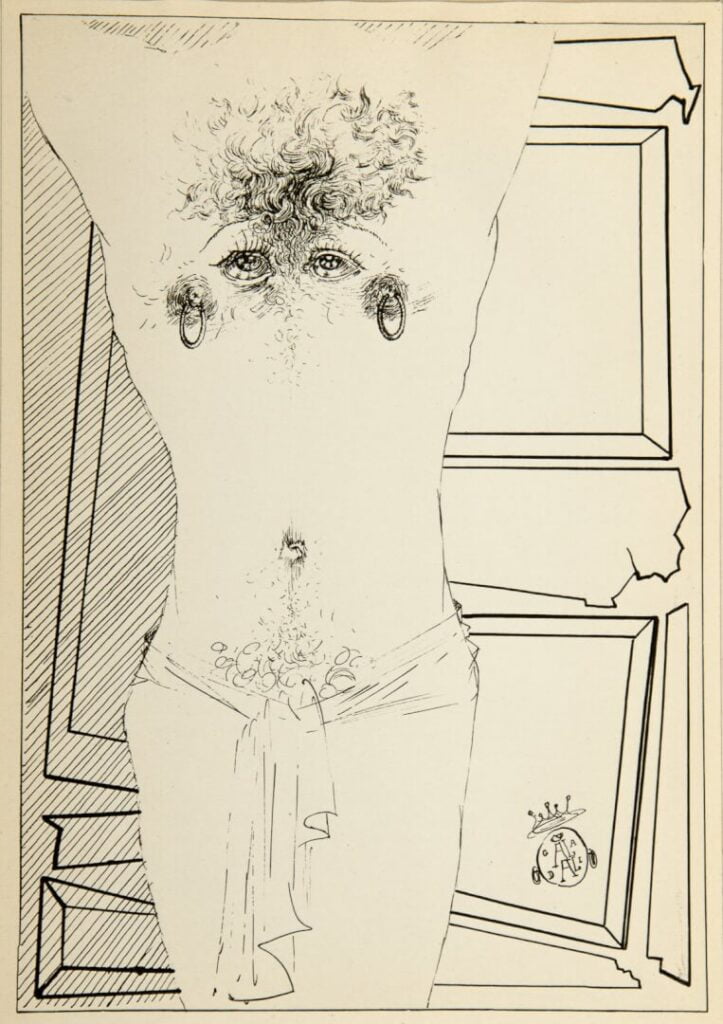- Works
- Bio
Bio
 Salvador Dali aka: Salvador Domènec Felip Jacint Dalí i Domènech, marquès de Dalí de Púbol born May 11, 1904 in Figueres, Spain, died January 23, 1989 also in Spain – Spanish painter, one of the most famous Surrealists.
Salvador Dali aka: Salvador Domènec Felip Jacint Dalí i Domènech, marquès de Dalí de Púbol born May 11, 1904 in Figueres, Spain, died January 23, 1989 also in Spain – Spanish painter, one of the most famous Surrealists.
He is one of the more recognizable artists of the 20th century.
He was born into a family of notaries. His artistic soul was evident from his early childhood. He began taking drawing lessons at the age of ten, and began successfully exhibiting his paintings at the age of fourteen. He originally became infatuated with Impressionism, which he learned through his father’s acquaintance and Picasso’s friend, the Catalan Impressionist painter Ramon Pichot. At the age of 23, he received a printing press from his father.
In 1921 Dalí began studying at the Royal Academy of Art in Madrid. He was expelled twice and never passed his final exams. In his opinion, he was more qualified than the people who would examine him. Dali was very confident. On his first visit to Paris in 1927, Dali met Picasso at his atelier, where the latter showed Dali his paintings. At first, Picasso’s paintings made a big impression on Dalí. Later, however, Salvador said that one painting of his was worth more than all of Picasso’s paintings.
In 1928, he moved to Paris. With the support of Joan Miró, Salvador Dalí became a full-fledged member of the Surrealist group. They centered around André Breton the founder of the theory of Surrealism. In 1928, Dali’s first painting considered surrealist was titled “Honey is sweeter than blood.” Dalí soon became a prominent figure in the Surrealist group. It was not until 1934 that Dalí was excluded from the group – he was accused of supporting fascism and greed.
By 1929, Dalí was embarking on the path of surrealism that would make him famous: it led to a world of the subconscious evoked during sleep. Surrealism was based on Sigmund Freud’s theory of psychoanalysis. The image of burning giraffes or melting clocks has become the artist’s trademark.
In 1929 Dali met Gala, which had a profound impact on the artist’s life and work. Gala, or Helena Diakonova, was a Russian immigrant, 10 years older than Dali. When he met her, she was married to poet Paul Eluard. Gala divorced Paul Eluard in 1932 to marry Dalí civilly in Paris in 1934 and churchly in 1958. She became his muse, love, model, friend, and also took care of the artist’s finances. Most importantly, however, it brought stability to his life – it contributed to the success of exhibitions held in 1930 in Europe and the United States.
During the years of World War II, Dali settled in the United States. It has held a number of high-profile exhibitions, including a retrospective of the Surrealists at the Museum of Modern Art in New York. Dalí became fashionable among the American elite. Celebrities, including Helena Rubinstein, commissioned portraits from him. Dalí took part in the filming along with Alfred Hitchcock, returning to his roots, so to speak, since his adventure with cinema began in 1928 with his collaboration with Luis Buñuel on the film “The Andalusian Dog.” Dali also designed jewelry and clothing for Coco Chanel.
In 1948 Dalí and Gala returned to Europe, spending most of their time in residences in Spain and France. Dalí began to take a strong interest in science, especially psychology and history, and drew his knowledge from scientific writings. In 1974 Dalí opened a museum he designed, the Teatro Museo Dalí, in his hometown of Figueres. The edifice was furnished from the remains of the theater. The choice of location was deliberate because, as Dalí claimed, his entire life was theatrical.
On June 10, 1982, Gala passed away. In May 1983 Dalí painted his last painting, “Swallowtail.” Dali died on January 23, 1989.
Curiosity:



